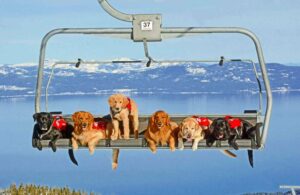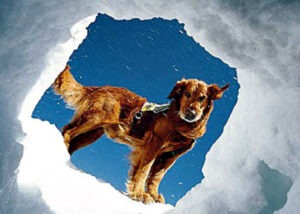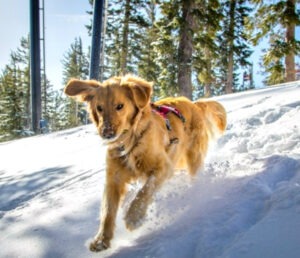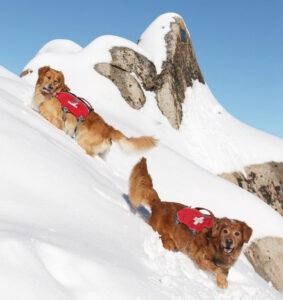One trained rescue dog can make a huge difference regarding life and death at a ski resort.

At many Tahoe ski resorts, some of the amazing rescue dogs were on display during the Ski California Safety Day on Saturday (Jan. 29).
How valuable is a Ski Patrol rescue dog? A highly trained avalanche rescue dog is reportedly equivalent to approximately 20 people on foot and can search the same area in an eighth of the time.
An avalanche search is often a life-or-death situation. And the dogs are crucial to someone’s survival.
If an avalanche victim is found within the first 18 minutes of burial, there’s a 91-percent chance of survival. After that, the rate falls sharply to 34-percent between 19 and 35 minutes.
Rescue dogs are taught things like digging out a skier who’s clinging to life, buried under 2 feet of snow. The role of the dogs is invaluable.

“Dogs are so smart and so capable of smelling well,” said David Reichel, executive director of the Sierra Avalanche Center. “They can find people who are not wearing a beacon, which is a real incredible role they can play.”
FOR RESCUE DOGS, IT’S GAME ON: Although a dog’s sense of urgency is one of their greatest strengths, these stressful search and rescue situations become “play time.” It’s a game the dogs love to play.
“For the dog, it’s not life or death; it’s just a game,” said Colton Terry of Heavenly Ski Patrol.
At Northstar California, the dogs and their handlers did a Saturday morning demonstration. A handler was buried in the snow and the dogs sprang into action, demonstrating their innate skills of finding and digging out the individual.
”It’s fun because everyone loves dogs and to see them working is really exciting,” Northstar Ski Patrol Supervisor Kolina Coe said.

Palisades ski patrol says it can take up to 1,000 hours of training for a dog and handler to pass their validation test.
“They’ve learned it’s really fun to play hide and seek, and specifically to look for human scent that’s under the snow,” said Ivain McGurk of the Palisades ski patrol team.
WHAT BREEDS ARE MOST COMMON? Typically, the rescue dogs come from a sporting or herding background.
Dogs that are most commonly used are German Shepherds, American Labrador Retrievers, Golden Retrievers, Bloodhounds, Border Collies, and Belgian Malinois.
Some dogs are naturals at searching for people, but not all dogs are suited to search and rescue work.
TRAINING IS EXTENSIVE: A good rescue dog can’t be affected by loud or sudden sounds, and must be able to get along well with other dogs and people. When the ski patrollers ride in a tram, snowmobile, or even a helicopter, the dogs go with them.

Although older dogs are also used, search and rescue trainers prefer to train dogs from a young age. It can take up to 2-3 years to fully train a search dog, so it is easier to start when the dog is a puppy.
Ryan McParland, a Heavenly ski patrol team member and dog handler, said the rescue dog program started decades ago, around the late 1980s to early 1990s.
At Heavenly, the 60-person ski patrol team is joined by six avalanche rescue dogs. Some resorts own their dogs, but at Heavenly, the animals belong to the ski patrol personnel.
“Having rescue dogs is an additional resource for us as a trained professional rescue group to help if a situation goes awry in the case of an avalanche condition,” McPartland said.